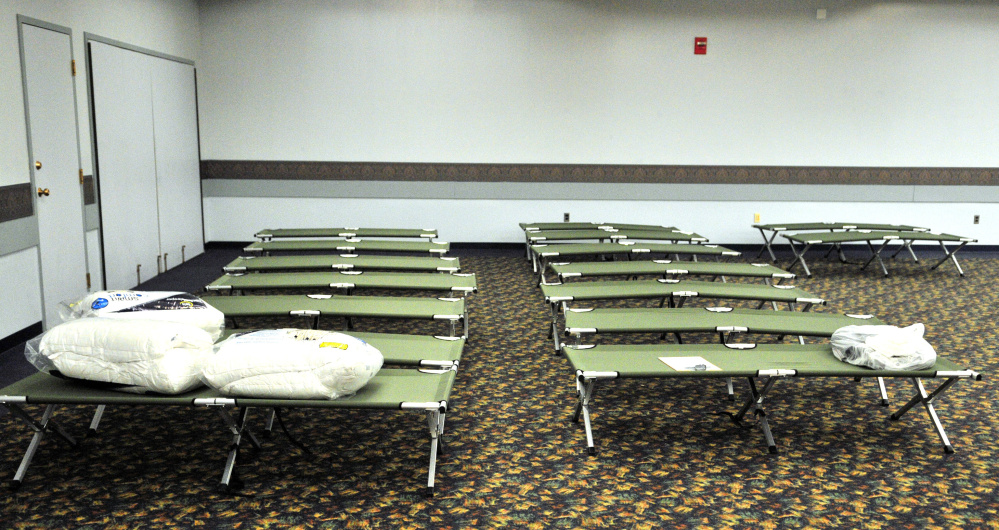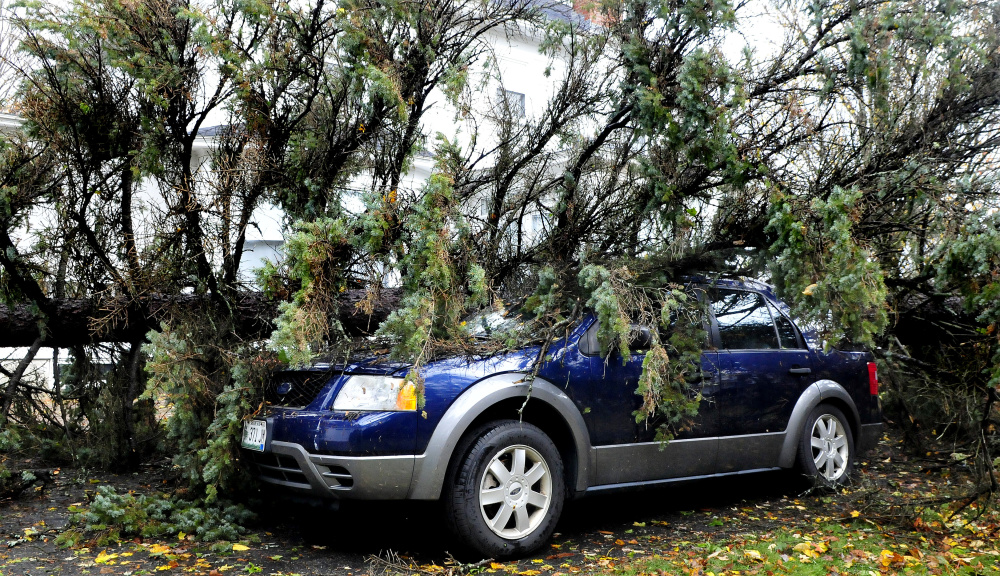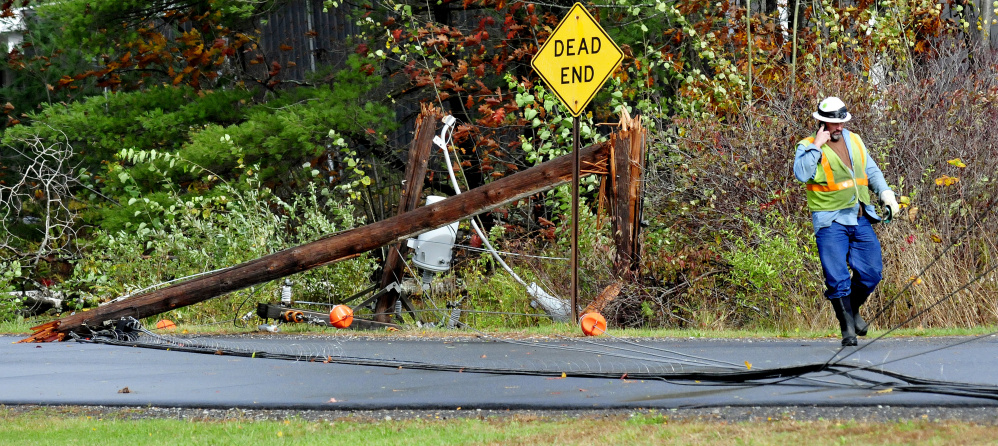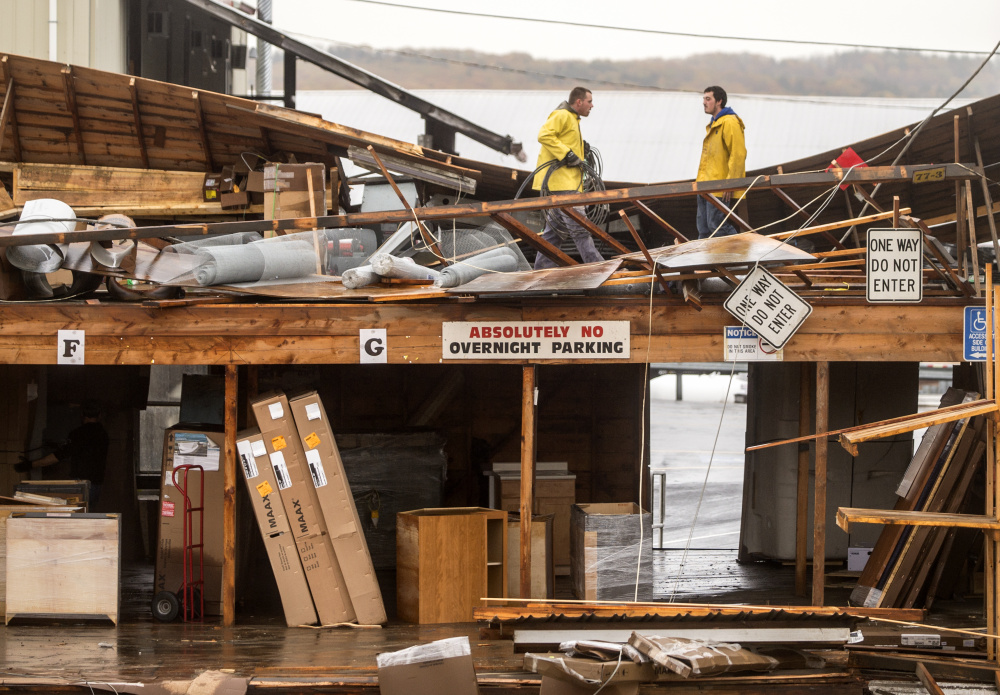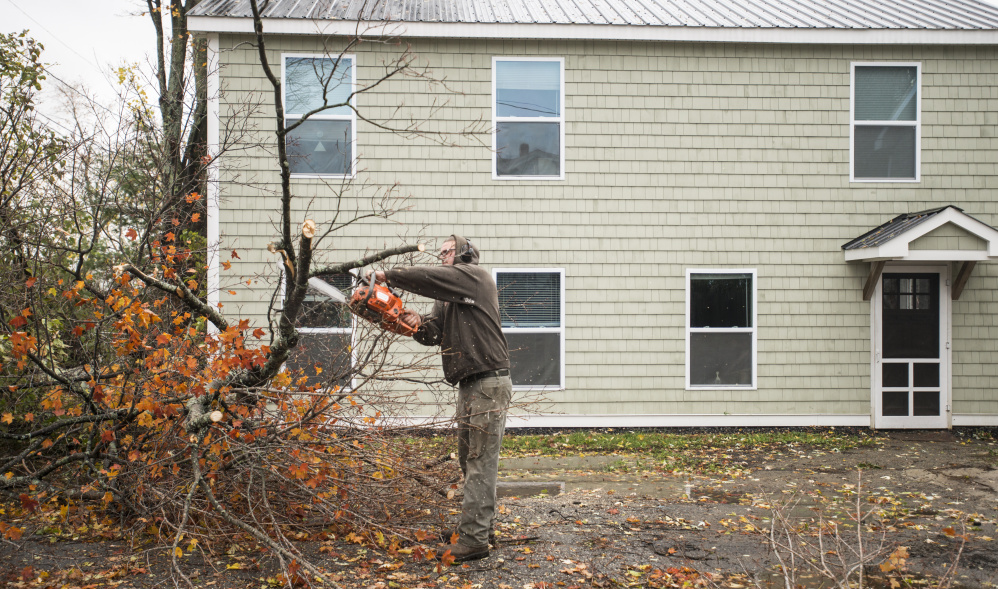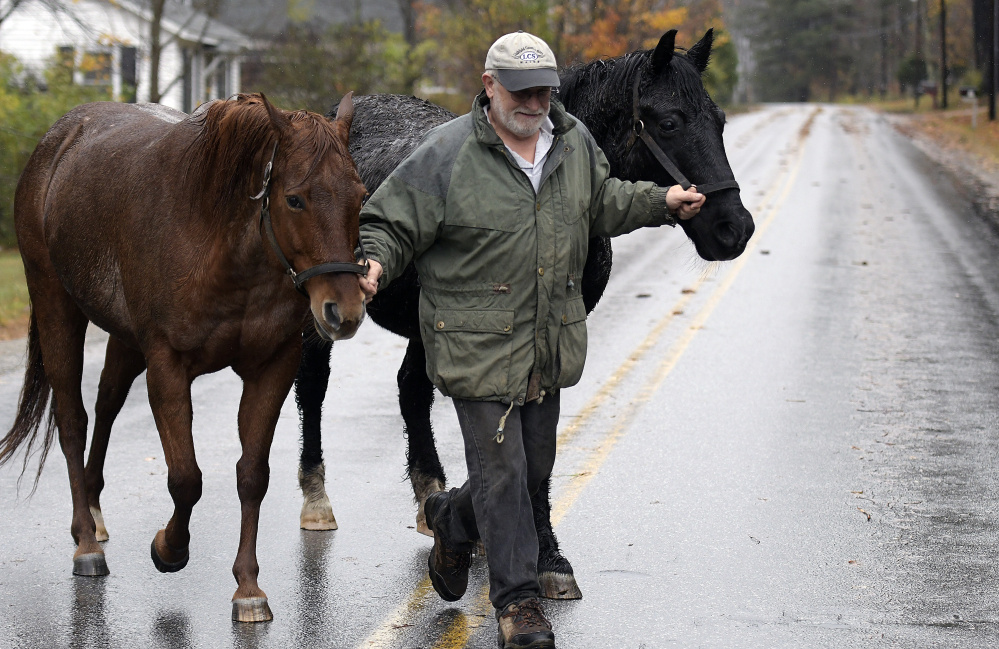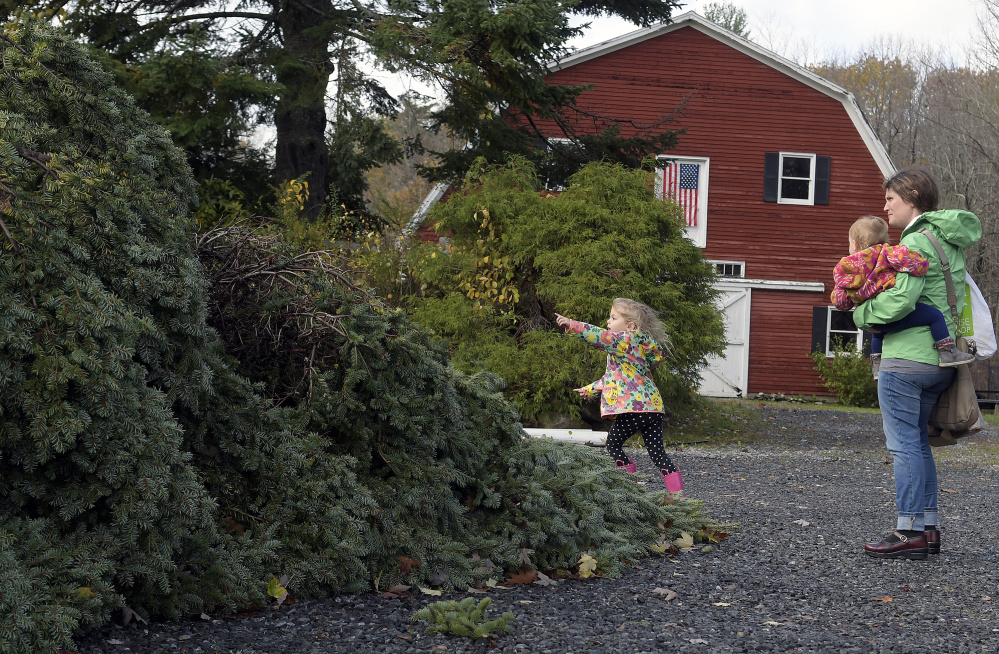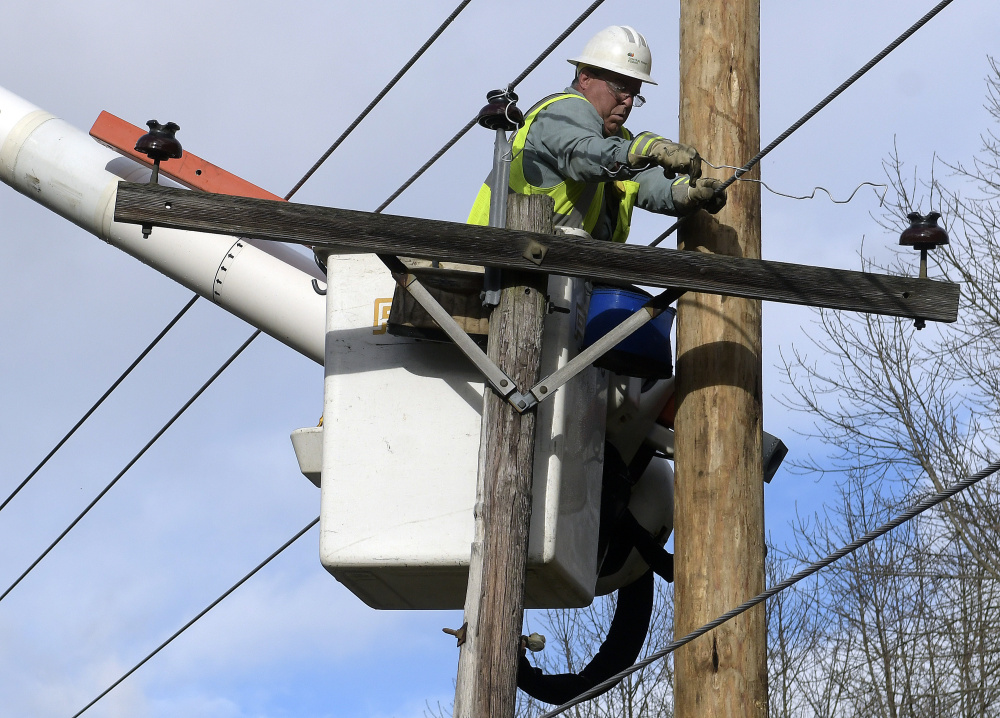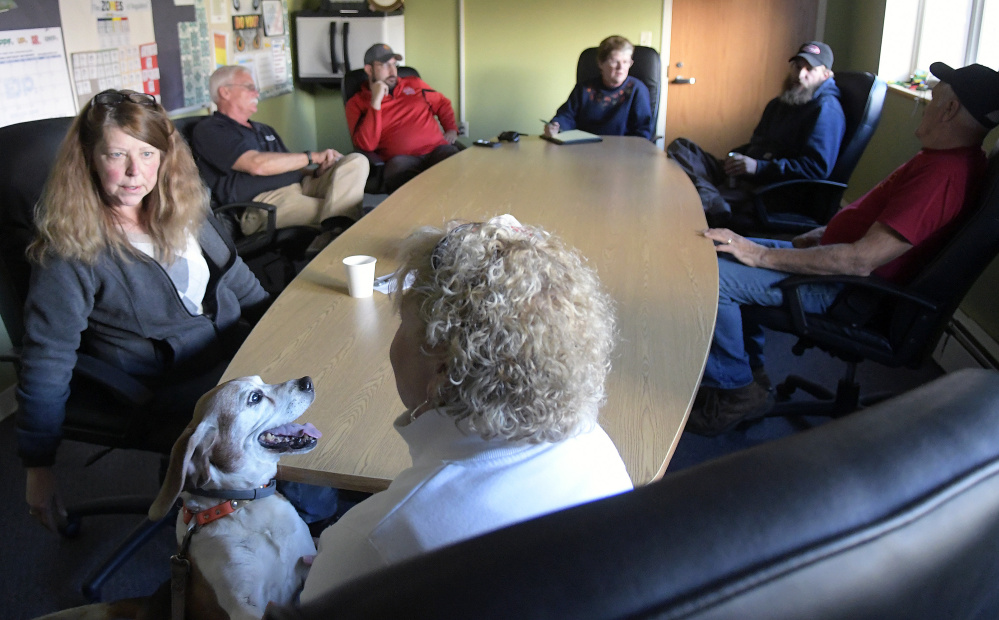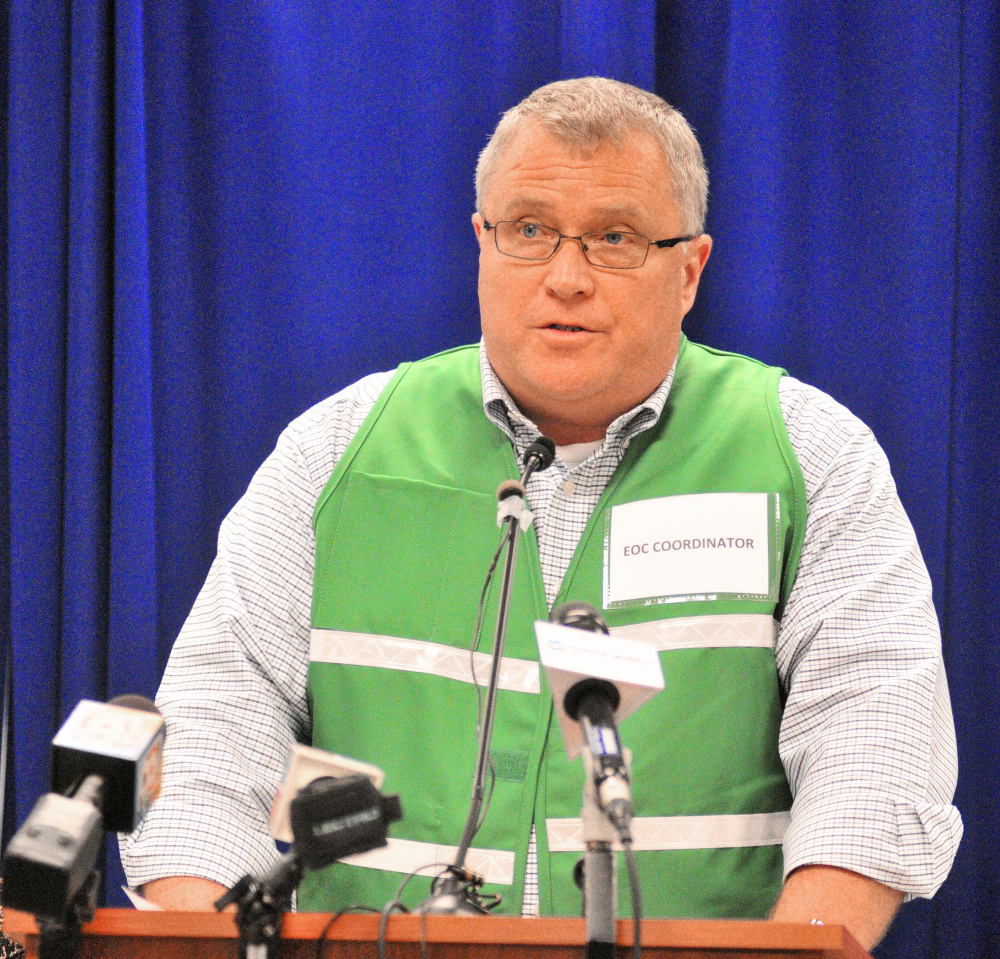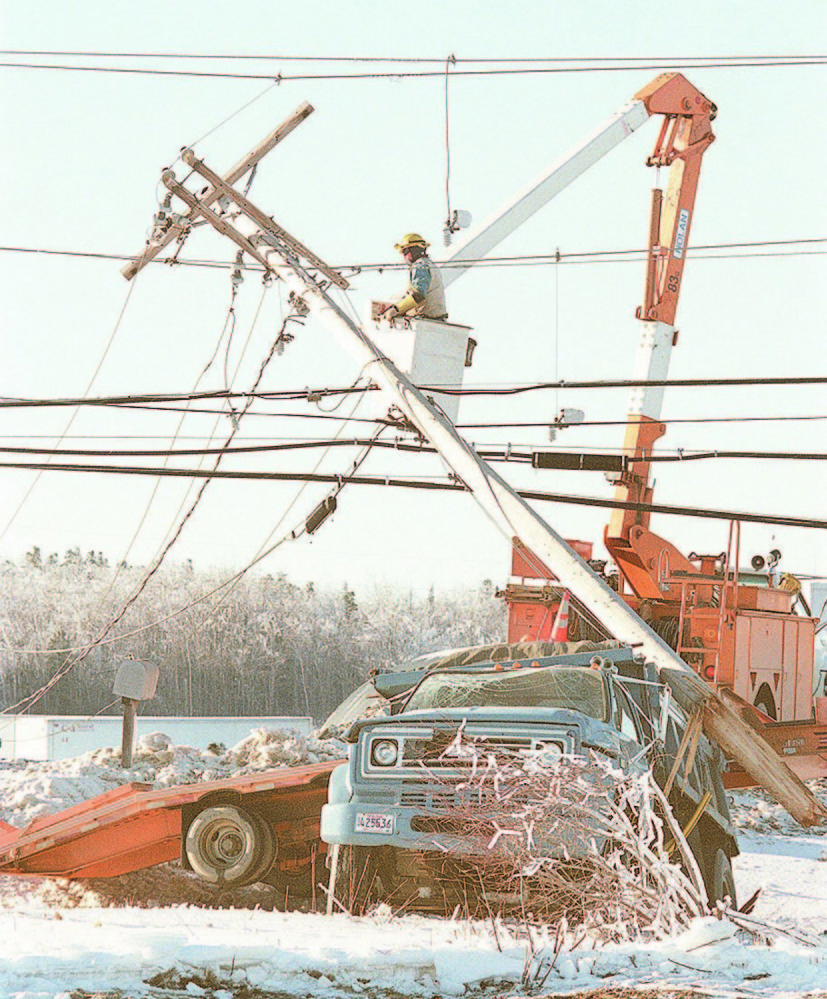AUGUSTA — Molly Jandreau said Monday’s surprisingly severe storm brought back flashbacks of the Ice Storm of 1998 — especially when she lost power, and heat, in her Glenridge Drive apartment.
Being cold is one thing she remembers all too well about the ice storm. So when she learned on Wednesday that an emergency shelter had opened for local residents at the Augusta Civic Center, she and her small 13-year-old dog, Barney, left the apartment behind and headed for the warmth of the shelter. It was fairly easy because, unlike in January 1998, the streets were clear, not coated in inches of near-impenetrable, treacherously slippery ice.
“In 1998 after the storm, you couldn’t go anywhere. Everything was covered in ice,” Jandreau said Thursday, one day before she planned to drive to Caribou to see her mother and where, she had been assured, there was electricity. “And it was awfully cold.”
Last week’s devastating wind brought Maine more power outages, nearly a half-million, than the Ice Storm of 1998; but unlike the ice storm, it caused no deaths. Also in contrast to the Ice Storm, after which some residents lived with no electricity for 23 days, power was expected to be restored to most of the state this weekend.
While that difference is in many ways attributable to differences in the storms themselves, and the less problematic conditions that followed the more recent storm compared to the ice-encrusted frozen wasteland of toppled trees and power poles that followed the ice storm, officials believe they learned valuable lessons in the Ice Storm that helped them respond more successfully to the recent storm of heavy wind and rain.
And they believe additional lessons will be learned from the most recent storm that will, in turn, inform the responses to future emergencies by public officials, utility companies and residents.
“It has been 20 years since the ice storm, and we’re still making improvements from that storm,” Susan Faloon, public information officer for the Maine Emergency Management Agency, said Friday. “Now we have a new storm to compare all other storms to. Hopefully, we won’t get another anytime soon. But if we do, that’s why we’re here.”
Six deaths in Maine were attributed to the Ice Storm of 1998. Some died from by carbon monoxide poisoning caused by improper operation of generators, including running the gas-powered devices indoors.
Faloon said public outreach efforts meant to teach residents how to use generators safely clearly have helped prevent deaths in this storm. She said the weather has been warmer, following the recent storm, than it was during the Ice Storm of 1998, which probably meant people are running their generators less, as well.
MEMA officials did note there still have been “several mild carbon monoxide issues” across the state, prompting them to remind residents generators need to be placed outside, at least 15 feet away from the home, with their exhausts pointed away from any building.
Sara Burns, president and chief executive officer of Central Maine Power Co., said lessons learned in the ice storm resulted in a more effective response to Monday’s storm.
“This is extraordinary and extensive damage, there is no corner of our service territory that hasn’t been damaged,” Burns said at a Maine Emergency Management Agency briefing on the storm last week. “Every storm we go into at CMP, we come out having learned something to get better. And we use everything we learn.”
Burns said CMP started planning for the storm early in the week prior to its arrival, talking to other utility companies, including in Canada, about sending trucks and workers to help restore power, if the help was needed. Which it was. This week hundreds of workers from other utility companies were brought in to help with power restoration.
However, some people said CMP should have prepared more for such storms even well before then, by trimming more trees along power lines ahead of time, to prevent so many trees from falling onto the lines and taking power out.
Pat Colwell, former speaker of the Maine House of Representatives, where he served on the Energy, Utilities and Technology Committee, said, both in an interview and in a Facebook post that generated a heated discussion, that CMP should have been much more aggressive in trimming trees that crowd power lines.
“It seems like 65 mile per hour winds should not put a half-million people off the power grid,” said Colwell, a former longtime Gardiner resident who now lives in Bath. “I’m a firm believer in preventative maintenance, whether it’s in health care or fixing my automobile or managing our utility systems. It’s always cheaper to fix something before a crisis happens. If I had to pay another $20 a year, or $50 a year, to be able to have the power not go out every time the wind blows, I’m happy to do that.”
Colwell noted his criticism is not of CMP’s linemen and other workers, who he said are doing a tremendous job restoring power.
Gail Rice, spokeswoman for CMP, said the company adopted a five-year cycle of tree pruning and distribution line inspection and maintenance in 2008, at the direction of the Maine Public Utilities Commission; and since then, tree-related outages have dropped about 30 percent. She said CMP spends about $25 million a year on vegetation management on distribution lines.
Rice said the five-year cycle strikes a good balance, improving reliability of the power grid while preserving the environmental and aesthetic benefits trees provide.
Barry Hobbins, the state’s public advocate, said that office and the state Public Utilities Commission have emphasized tree trimming by electrical utilities for the last decade. He said a number of requirements have been imposed on utilities to increase tree-trimming, and the utilities have followed those protocols.
He said it makes sense to look at how things could be done better in future storms, but now is not quite yet the time.
“The most important thing now is to get everyone’s power back on. The first step forward is getting everyone back to normal,” Hobbins, whose own home was hit by a large falling tree during the storm, said Friday. “Everyone survived; that’s the good news. If something needs to be done, if corners were cut, those will need to be looked at. But this is not the time to point fingers.”
BETTER COMMUNICATIONS
Officials said numerous lessons learned in the Ice Storm of 1998 informed the response to the recent storm. Kevin Russo, state exercise coordinator for Maine Emergency Management Agency, said that just two weeks ago the emergency-preparedness agency wrapped up a yearlong series of training on how to respond to ice storm scenarios. He said improved communications were one result, with state officials staying in touch with county officials, and with representatives of numerous state agencies and electrical utility companies coming together at the State Emergency Operations Center in Augusta.
“By doing that, we were able to iron out some of the kinks we might face in a real-world scenario,” Russo said at a MEMA press briefing. “We were able to revamp those plans. We were able to update our contact list and then work with all those agencies and really work on building those relationships and getting everyone together in the same room. So as this event started happening, those communications were already in process. We train, we plan, we exercise for these kinds of scenarios all the time. And this week we’re cashing in on that.”
Rice said steps being taken by CMP to make the power grid more resilient and shorten recovery time after damaging weather include installing thicker utility poles in areas considered vulnerable to severe weather; using, when distribution lines are due to be replaced, coated lines that are less sensitive to incidental tree contact; and the use of new technology to increase efficiency when restoring power after a storm.
She said the list of changes made to CMP’s approach to storm recovery since 1998 is too extensive to list, but it includes staging crews and equipment, damage assessment and repair, and arranging for food, lodging and other needs of working crews.
QUICK STORM
A much less troublesome weather pattern following the recent storm, especially compared to what came after the ice storm, was a major factor in the increased pace of restoration of power, as well as the lack of deaths resulting from the storm.
The morning of Jan. 8, 1998, Augusta police Chief Robert Gregoire was a sergeant working the overnight shift when the ice storm hit, and much of Maine, Augusta included, lost electricity.
“It wasn’t just the power outage. It was not being able to get around. Everything was coated in ice,” Gregoire said of that morning. “Sand trucks were having difficulty doing anything. We parked our cruisers up on hills, just so we could respond. Even on foot you had to be careful.”
Chris Kimble, a meteorologist with the National Weather Service in Gray, said central Maine endured several days of icing and below-freezing temperature, with some starting on Jan. 5. Precipitation fell and froze in place, coating trees, streets, cars and nearly everything else in multiple inches of ice.
Residents struggled to stay warm with no electricity. The temperature in Augusta climbed into the mid-30s on Jan. 10 and 11, dropped to 24 on Jan. 12, picked back up to 39 on the 13th but then plummeted, going down to single digits on the 14th and 15th.
By comparison, the weather was much friendlier last week, with sunny days and temperature reaching into the 60s some days.
“This storm was quick. It was here and gone,” said Lesley Jones, public works director for the city of Augusta. “It’s a lot warmer” than it was in the days following the Ice Storm of 1998.
Jones, who in 1998 was the city’s solid waste director, said lessons learned from the ice storm that have helped improve the city’s response to storms include increased preparedness and more emphasis on worker safety.
“During the ice storm we figured out, after a while, that we had to pull our people off the street, because too much stuff was falling,” Jones said. “This time, we made sure everyone went out in pairs, and we did a safety talk beforehand.”
She said the city scheduled people to come in at 4 a.m. Monday and had workers prepare chain saws, trucks and other equipment for what turned out to be a rough day of storm recovery ahead.
Gregoire said the city is better prepared because of lessons learned in the ice storm. He said the most essential city buildings, unlike in 1998, now have generators to provide power in emergencies. He said the city also now always has meetings after emergencies to discuss what went well and what could be improved next time.
Peter Rogers, acting director of MEMA, said the years of training since the ice storm have greatly improved communications among state, county and local officials.
“This response has been much better, and it’s working very well,” he said. “We’re a resilient state, and we’re used to severe storms, but that doesn’t make them any less devastating. Nobody thought we’d probably ever see another Ice Storm ’98, in numbers (of power outages). But we’ve breached that. Like all other storms, we will recover, and we will be stronger. But it will take some time and patience.”
Keith Edwards — 621-5647
Send questions/comments to the editors.




